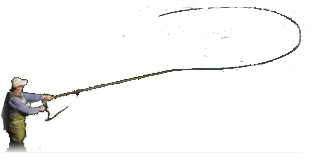I am having a problem gettng my fly to lay down on the water. When casting a #24 dry on 7x tippet I find that the fly will at times set down with the curve down and the eye straight up. I can see the loop of tippet off the eye of the hook. A slight tug and it lays flat. I am wondering why this is happening and have a few thoughts. Would like your opinion.
1. The leader has some curls in it and the weight of the fly is not enough to keep the tippet from curling after the force of the cast ends.
Solution: replace tippet, cast lower to the water.
2.I use too much force on the cast and do not end it smoothly, making it like a pile cast
Solution: Lower rod at end of cast or let some line slip out to reduce force at end of cast.
3. Use a heavier fly
Solution: fagettaboutit. In the last few weeks it has been very successful on the other casts and I have caught up to 20" browns and rainbows with this fly.
4. Solution: learn to cast better.
Your thoughts??
jed




 Reply With Quote
Reply With Quote
